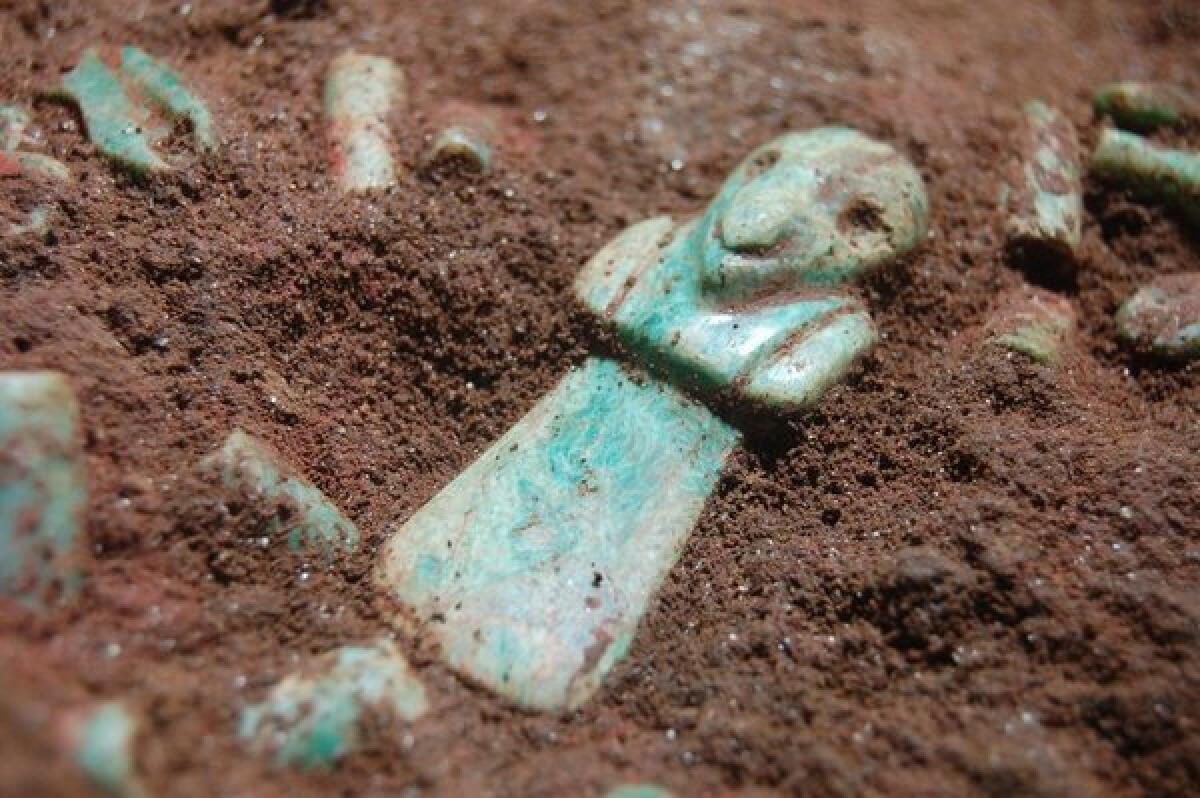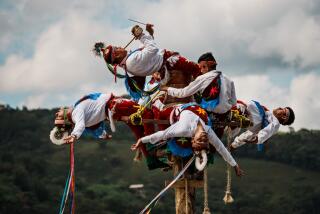Archaeologists find tomb of first important Maya ruler

Guatemalan archaeologists have found the tomb of what may have been one of the Maya’s earliest rulers and perhaps its most influential. King K’utz Chman introduced many cultural features that eventually defined the Maya, including building pyramids instead of square structures and commissioning the production of carved sculptures that depicted the royal family. His grave is the most ancient royal Maya burial to be found and it contains a variety of carved jade objects indicating his wealth and status.
“He was the big chief,” archaeologist Miguel Orrego of the Guatemalan Instituto de Antropologia e Historia told Reuters. Chman was “the ruler who bridged the gap between Olmec and Maya cultures and initiated the slow transition to Maya rule.”
The tomb was found in June at the site of Tak’alik Ab’aj, a large city in the Retalhuleu department of southwestern Guatemala, about 110 miles south of Guatemala City. Tak’alik Ab’aj is the Maya name, meaning “Standing Stone,” given to the site by scientists. Its ancient name may have been Kooja, meaning “Moon Halo.” The city flourished from about the 9th century BC through at least the 10th century and its residents traded heavily with other cities, some as far away as Teotihuacan in Mexico. It is one of the largest Maya sites along the Pacific Coast.
The newly discovered tomb contains no human bones, but carbon-dating of other organic materials indicates that it was constructed sometime between 770 and 510 BC. The Maya empire began to thrive around 400 BC as the Olmec empire faded.
Inside the tomb, the team found a variety of jade objects, including a necklace with a pendant carved in the shape of a vulture’s head. Such objects were generally the property of very powerful men and a symbol of great respect. Because of the necklace, the team named the king K’utz Chman, which translates roughly as “Grandfather Vulture.”
Other objects in the tomb included ceramic pots, ceramic dolls and jade beans.
“The richness of the artifacts tells us he was an important and powerful religious leader,” said archaeologist Christa Schieber of the institute. “He was very likely the person who began to make changes in the system and transition into the Maya world.”






